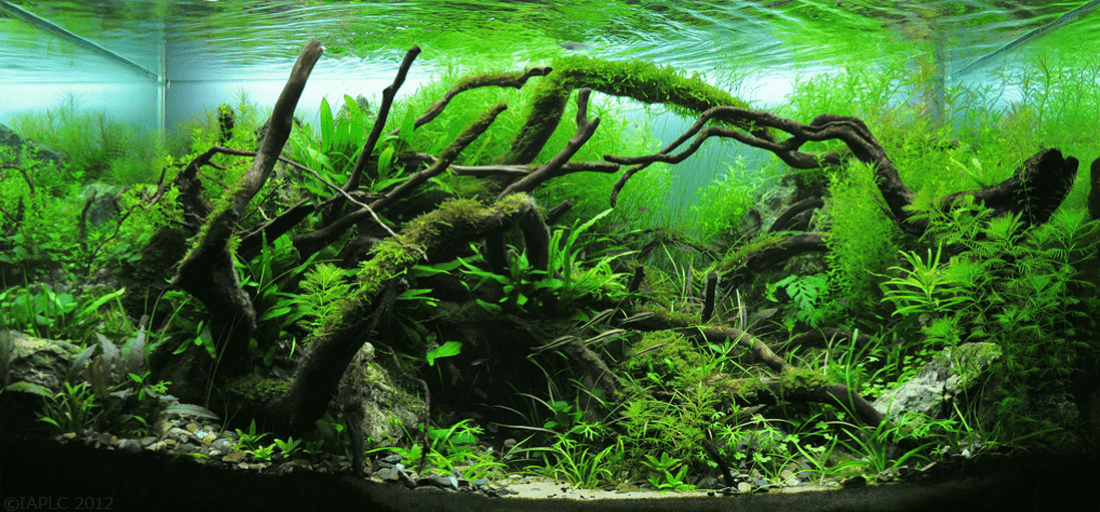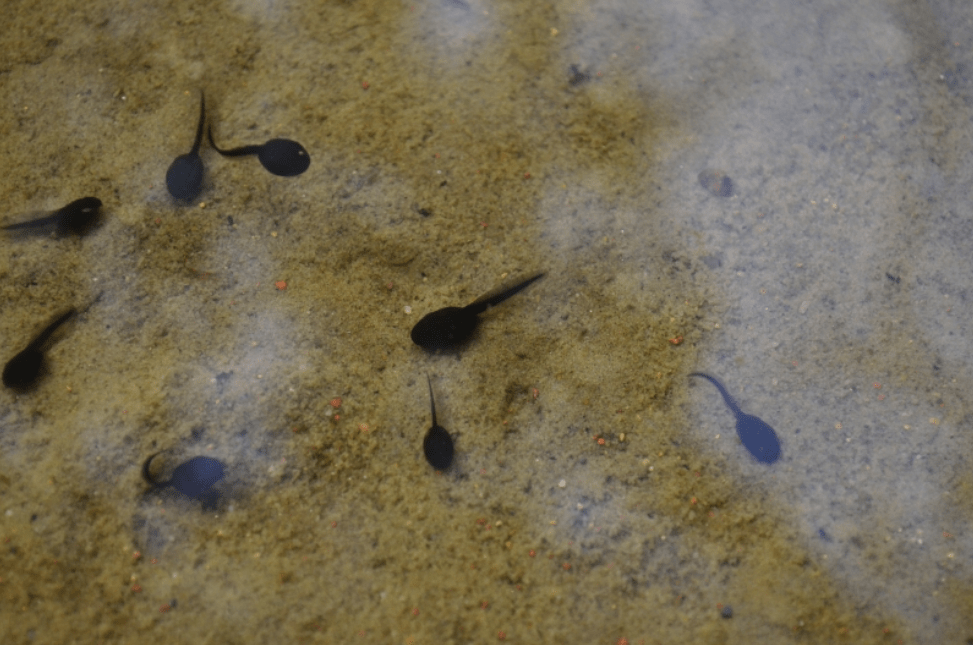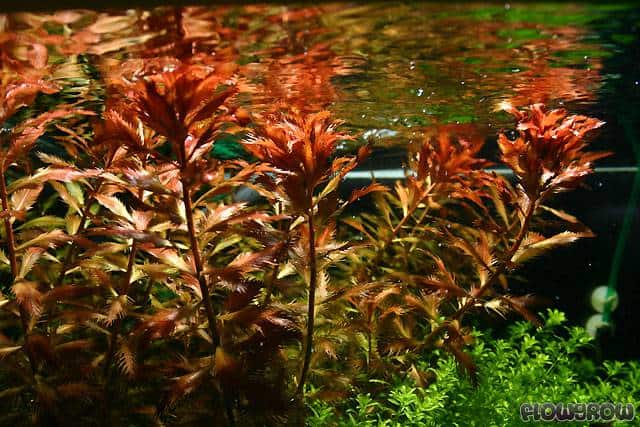Apart from your fish, aquatic plants make your tank or pond such a picture-perfect beauty to look at. If you’re searching for stunning aquatic plants to beautify your aquarium, investing in Proserpinaca Palustris is the best decision you will ever make.
Learn more about >one of the world’s most beautiful freshwater plants and why the plant should be your next purchase when you want to elevate the quality of your aquarium or pond.
An aquatic origin
With common names such as Mermaid Weed and Marsh Mermaid Weed, this aquatic plant is no doubt designed to thrive in the water. For any of you who isn't familiar with its scientific name, people also call the plant as Sawtooth Hygro and comes from the Haloragaceae family under the genus Proserpinaca.
You can find many Proserpinaca Palustris distributed all over wetlands across eastern and southern North America. This aquatic plant thriving in US states like Connecticut, Maine, Massachusetts, New Hampshire, Rhode Island, and Vermont. You can also stumble upon some varieties of this stem plant in Central and some parts of South America and the Caribbean.

The Mermaid Weed grows in still or slow-moving bodies of water as well as in humid soils.
You can find it thriving in ditches, lakes, marshes, pools, ponds, rivers, streams, lake and river shores, swamps, and edges or margins of wetlands.
The Mermaid Weed is also classified as an herbaceous plant and has been around for many decades as an aquarium and pond plant. It first gained attention in the 1950s after being featured in the Wendt’sche Blaetter publication but became known all over the world as an ideal aquarium and pond plant when it was imported from Cuba by Danish plants seller Tropica.
The extraordinary beauty of the Mermaid Weed
Proserpinaca Palustris has produced many varieties over the years of its cultivation in many regions. As it grows in many geographic locations, this aquatic stem plant varies from region to region.
This aquatic plant has a typical light green color highlighted with reddish tops. The red pigmentation develops overtime when under intense lighting.
What makes the plant stand out apart from its beautiful color are the serrated edges that surround the leaves when under submerged growth. These serrated edges can ward off predators but aren’t that sharp at all.
With its serrated edges, the Mermaid Weed may resemble a rosemary plant when growing above the waterline. Under water, however, it is unlike any other plant due to the uniqueness of its saw-toothed leaves.
This typical description of the Marsh Mermaid Weed is different from the Cuban variety, which has leaves that aren’t too wide and not too serrated. The Cuban Proserpinaca, however, is the most common Mermaid Weed you can find in the European market today.
It can grow from 4 to 16 inches (10 to 40 centimeters) long and 2 to 6 inches (5 to 15 centimeters) wide. As it develops, this aquatic stem plant will have rounder, greener leaves and will reproduce plenty of seeds.
Characteristics of the Marsh Mermaid Weed
Proserpinaca Palustris is not that difficult to grow or cultivate, but it requires a significant amount of time to develop from its emersed (green, saw-toothed leaves) to its submersed form (orange-red, finely toothed leaves). Its leaves constitute two or more discrete leaflets with simple lobes, arranged one after the other with one leaf per node along its stem. The edges of its leaf blade also contain lobes or may contain both lobes and teeth.
The Proserpinaca can also produce flowers you can divide in a symmetrical fashion. Each flower has three petals, sepals, or tepals each, which when attached can form a cup or tube. At full growth, it may also produce fruits that grow to about 2 to 5 millimeters, which are dry and do not split open even in their ripe form.
How to care for the Mermaid Weed
While not that difficult to grow or cultivate, a diverse range of environmental conditions may affect the growth and physiology of the Proserpinaca Palustris. You must provide proper care and attention for it to grow into the beautiful aquatic plant you desire.
The Mermaid Weed is grown or cultivated in closed cups with its serrated edges still present. As it grows in the aquarium, these serrated edges will grow into long, needle-like leaves.
Fine gravel is the recommended substrate to grow a Proserpinaca Palustris plant. To plant, just leave the stem cuttings on the substrate and soon enough, these stems will scatter their roots all around.
You can also have the Proserpinaca in your pond by planting it in sand or clay or placing it on the shelf of the pond. You can also use small anchors to put weight when you want it submerged under water.
Make sure that your tank’s water maintains a 5 to 7.5 pH value.
Lighting-wise, put your tank under medium to strong light (about 0.5 watts or more per liter) with a temperature of between 10° to 28° Celsius in order for this stem plant to grow healthy and produce leaves of vivid colors.
I also recommend carbon dioxide. Add carbon dioxide to the water can speed up the growth of the Marsh Mermaid Weed. You need about 20 to 30 mg per liter of carbon dioxide to help this stem plant achieve its full growth potential.
In order for the leaves to achieve a deep orange-red color, your tank must have a good balance of NO3 (about 5 to 10 mg per liter) and PO4 (about 1.5 to 2 mg per liter). Higher nitrates in the water can help the plant’s leaves achieve lighter orange to green coloration.
Keep your Marsh Mermaid Weed cared for at all times to avoid a dull-looking plant. Under poor lighting conditions and when there are insufficient nutrients in the water, Proserpinaca sheds its leaves. You must inject a sufficient supply of iron and carbon dioxide to prevent the leaves from fading and shedding.

By Duc Viet Bui (IAPLC 2012) [CC BY-SA 4.0 ], via Wikimedia Commons
Since it doesn’t grow too fast, the weed does not produce many lateral shoots, so it does not need frequent propagation.
Talking about growing the plants. If you are familiar with growing other types of stem plants, you shouldn't face any difficulty growing this plant.
You can cultivate more of the Proserpinaca by trimming and replanting its lateral shoots into your substrate. If you want more of its vibrant color in your aquarium, you can cut off the stem tops and replant them to distribute the color around.
You can discard the stem bottoms or keep them in the substrate to give the Mermaid Weed a more bushy look. Leaving the bottom part of the plant also helps produce more side shoots. You can remove these new shoots and replant them in the substrate as new plants once they grow to about several inches long.
Why the Proserpinaca Palustris makes a good aquarium or pond plant
Due to its striking color and eye-catching beauty, the Proserpinaca Palustris has become a preferred aquarium plant for many hobby aquarists. If you have a small tank, the Mermaid Weed is an excellent choice, as it doesn’t grow too high and doesn’t grow quick.
The allure of the Marsh Mermaid Weed stems from the way it grows. From vibrant green leaves that have choppy edges, it can grow to become a stunning center of attention that can leave everyone awe-struck by its pink, almost golden-colored, bristle-like leaves.
The bright red-orange hue and the feather-like leaves of the Proserpinaca Palustris add an attractive value when placed in the middle ground or foreground of your aquarium. The intricate leaf structure and its vivid coloration can provide your tank a pop of unique beauty and color is sure to gain accolades from guests.
With its red, almost copper hue, the Proserpinaca can provide a great contrast to other aquarium plants, offering good background coverage when you’re aiming for a Dutch-themed aquascape for your tank.
Not only does this aquatic plant possess arresting aesthetic beauty but beneficial qualities. As an oxygenating pond plant, it can grow submerged under water where it receives its nutrients or as an emergent bog plant growing and receiving its nutrients above water. Since it gains its food from water, it helps keep it clean as it aids in algae elimination.
When planted in your pond, the Mermaid Weed can also be a great source of nutrients for growing tadpoles. Tadpoles can consume this to help them transform faster in the pond. When submerged, small fish also find this stem plant as a good cover to hide in.

An aquatic stem plant of true extraordinary beauty, Proserpinaca Palustris is the perfect choice for you if you want an aquascape that is brimming with picturesque color and unique texture. Give your aquarium or pond a touch of this vibrant plant and see your aquascape come to life!


